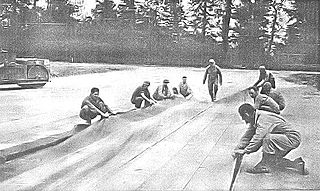
Zaventem is a municipality in the province of Flemish Brabant, in the Flemish region of Belgium. It is located in the Dijleland area, one of the three large recreational areas which together form the Groene Gordel around the Brussels-Capital Region. The municipality comprises the subdivisions or deelgemeenten of Nossegem, Sint-Stevens-Woluwe, Sterrebeek and Zaventem proper. The municipality is a suburb of Brussels, and Sint-Stevens-Woluwe directly borders the city, specifically the Woluwe-Saint-Lambert municipality.

Bassenge is a municipality of Wallonia located in the province of liège, Belgium.
Saint-Hubert often refers to Saint Hubert of Liège, who was appointed Bishop of Liège in 708 AD. It could also refer to:

The ICAOairport code or location indicator is a four-letter code designating aerodromes around the world. These codes, as defined by the International Civil Aviation Organization and published quarterly in ICAO Document 7910: Location Indicators, are used by air traffic control and airline operations such as flight planning. ICAO codes are also used to identify other aviation facilities such as weather stations, international flight service stations or area control centers, whether or not they are located at airports. Flight information regions are also identified by a unique ICAO-code.

MET – Montreal Metropolitan Airport, formerly known as Montréal Saint-Hubert - Longueuil Airport or Montréal/Saint-Hubert Airport, and still commonly referred to as St-Hubert airport, is located in the Saint-Hubert borough of Longueuil, Quebec. The airport is located 16 km (9.9 mi) east of Downtown Montreal and 3 nautical miles east of downtown Longueuil.
RAAF Gingin, sometimes also RAAF Base Gingin or RAAF Base Gin Gin, is a Royal Australian Air Force (RAAF) small military airfield located at Gingin, in Western Australia.

Canadian Forces Base St. Hubert was a Canadian Forces Base in the city of Saint-Hubert, Quebec. The base began as a civilian airfield in the 1920s and was later also used by RCAF auxiliary (reserve) squadrons, beginning in the mid-1930s. It became a fully-fledged RCAF station early in World War II, being extensively used for training as part of the British Commonwealth Air Training Plan. After the war, it grew into one of the most important air bases in Canada, and remained so for decades.

Novi Sad Airfield, also known as Čenej Airfield, is located near the village of Čenej in Vojvodina, Serbia. The site is mostly used for sport and agriculture, operated by Aero Club Novi Sad.
Saint-Ghislain Airfield is a recreational airfield located in the Walloon municipality of Saint-Ghislain, province of Hainaut, Belgium.

Advanced landing grounds (ALGs) were temporary advance airfields constructed by the Allies during World War II during the liberation of Europe. They were built in the UK prior to the invasion and thereafter in northwest Europe from 6 June 1944 to V-E Day, 7 May 1945.

Aachen Merzbrück Airfield is an airfield located near Aachen, Germany.

Moorsele Airfield is a recreational airfield located in Moorsele, a village in the municipality of Wevelgem in Belgium. It is operated by Vliegveld Moorsele VZW and was formerly operated by the Belgian Air Component. It is mainly used as a light general aviation field for ULM and parachuting activities.
Weelde Air Base is a NATO reserve airfield located in Weelde, a village in the Ravels municipality in Belgium. It is operated by the Belgian Air Component that has no military flight operations at that location, besides aircraft arriving to be stored or leaving storage, for example retired F-16 aircraft. The Belgian Air Component also uses the airfield for the activities of the Belgian Air Cadets.
Saint-Hubert Air Base is a military aerodrome located northeast of Saint-Hubert, a municipality in the province of Luxembourg in Wallonia. It is not in active use.

Saint-Simon – Clastres Air Base is an abandoned military airfield, which is located approximately 3 km (2 NM) northwest of Clastres and east of Saint-Simon, both communes in the Aisne department of the Picardy (Picardie) region in France. It is approximately 116 km (63 NM) north-northeast of Paris.
Sint-Truiden / Brustem Airfield is an airfield located in Brustem, 1.5 nautical miles southeast of Sint-Truiden (Limburg) and approximately 37 mi (60 km) east of Brussels. Formerly known as Sint-Truiden Air Base or Brustem Air Base, the aerodrome was deactivated as a Belgian Air Component base in 1996.
Namur-Suarlée Airfield is a regional aerodrome in Belgium, located at Suarlée and Temploux, 4 nautical miles west-northwest of Namur, in Namur Province, Wallonia. It is about 65 km (40 mi) southeast of Brussels.

Haren Airport or Evere Airfield is a former military airfield and civil airport in Brussels, Belgium. Located in Brussels' city section of Haren and adjacent municipality of Evere, it was established by the German Empire in 1914 and lasted until the early 1950s when it was closed. Meanwhile it had been replaced by nearby Melsbroek airfield that Nazi Germany had established in World War II, which developed into the current Brussels Airport. The former grounds of Haren-Evere airfield were redeveloped as part of the expanding Brussels urban area; some buildings remain in use as facilities of the Belgian military. Since 2017, NATO headquarters are located at Haren (Brussels) on part of the former airport grounds.
Skeyes, formerly called Belgocontrol or in its complete form the Authority of airways, is the Belgian air navigation and traffic service provider for the civil airspace for which the Belgian State is responsible. It was created in 1998.
Saint-Hubert Airport may refer to:













